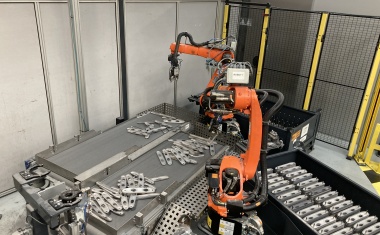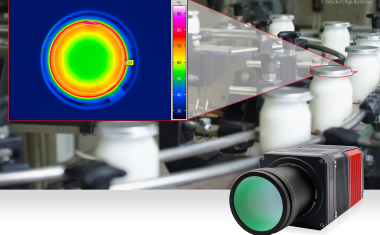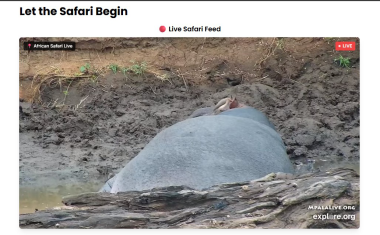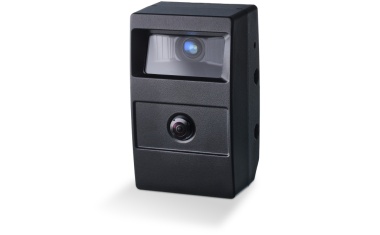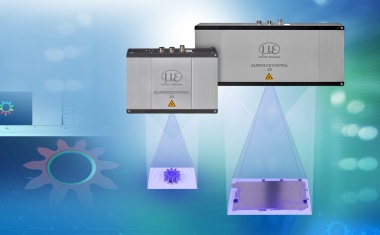In the Accelerator
Currently, a particle accelerator is being set up at the Heidelberg Cancer Research Center. It combats brain tumors using heavy ion radiation. But the newly developed accelerator chamber is designed in such a difficult manner that for a long time, the researchers have not found any production company which was able to manufacture the required welded stainless-steel structure. The challenge lies in the hidden welding points.
Certain previously inoperable brain tumors can be combated in an astoundingly gentle manner using heavy-ion radiation. A pilot project conducted by GSI Darmstadt (Helmholtz Centre for Heavy Ion Research) together with the Cancer Research Center Heidelberg has demonstrated this. Parts of the Heidelberg accelerator were developed at the Stern-Gerlach Center under the leadership of Ulrich Ratzinger and Alwin Schempp. "In two years, the largest scalpel in the world will also be used to treat patients in Heidelberg," explains Alexander Bechtold, one of the researchers of Ratzinger's team. The team is already working on smaller and more powerful successor models of the accelerator components. True to the working title "Low Energy Transport of an Incoherent Proton Beam," the researchers developed an accelerator chamber whose performance will far exceed that of previous models. But the final design is so difficult that no production company has yet been found that is willing to build the welded stainless-steel structure.
Construction Mechanics Specialists
The assembly that is to be manufactured is a tube approximately 1.5 m long and 40 cm in diameter, in which conical constructions radially fix the focusing and accelerator units with a spacing of approximately 10 cm. At the manufacturing process the surface has to keep very smooth to ensure a uniform copper-plating. Moreover, the unit must be extremely vacuum-tight. Surfaces must be permanently resistant against the cooling media flowing in the hollow spokes to the focusing units. For these requirements the most appropriate welding method is a manual MIG welding. The points that are to be welded are difficult to visualize owing to the design of the structure. It is not possible for the welder to access the depth of the tube with his head while wearing a welding helmet.
Due to these complex requirements the Stern-Gerlach Center's researchers appeal to the Construction Mechanics specialists from Frankfurt University. This department of the university realizes special metal-working jobs. There, Jürgen Kölichhaus and his team attend to components or products which are too complicated or too labor intensive for external manufacture. Wolfgang Gass, a construction mechanic, developed a concept which essentially allows the production. But one problem stayed: Welding points that are hidden from direct visual observation. The welding specialist, however, is not permitted to work blind. If he were to do so there would be a high risk of not meeting requirements for surface quality and tightness.
Camera Concept for Visual Inspection
Tests with optical systems or mirrors to bring these welding points into the field of vision of the welder remained unsuccessful due to the large distances and strong impairments of vision through reflections inside the shining stainless steel structure. Inquiries addressed to welding institutes also failed to turn up any satisfactory solution to the problem until the team found the company hema electronic with its camera system suited for the job. Their seelectorICAM weld has a unique concept for recording and displaying the very high differences in brightness. To control the process, the welder has to be able to visualize the arc, the puddle and the surrounding area as precisely as he would with his own eyes through the welding helmet. Initial tests on a simple sheet-metal model showed: With a little practice the welding specialist can use the monitor to keep the visual control for the manual guidance of the torch.
After these successful initial tests, hema electronic, camera specialist based in Aalen, Germany, put together a complete package made up of camera, notebook computer and additional 10" monitor.
Welding Seams Fulfill Requirements
Bastin Chakkalamattah, the welding specialist who conducted the tests, says: "It requires a little practice to master the eye-hand coordination, but the sharp images of the camera allow me to monitor the process visually at any time. I can see very precisely the arc, the puddle and the surrounding area. Therefore I know whether and how the process is going."
A first prototype of the new accelerator tube has since been constructed and the X-ray check of the welding seams created with the help of the seelector-ICAM weld show faultless and perfectly executed welds. After proof was provided that the manual welds made using camera monitoring meet the extremely high requirements, the accelerator chamber is scheduled to be constructed this year.
The head of construction mechanics, Jürgen Kölichhaus, says: "No commercial business would have been willing to risk building this accelerator chamber - and without the hema camera seelector-ICAMweld, we would not have managed to do it either."







